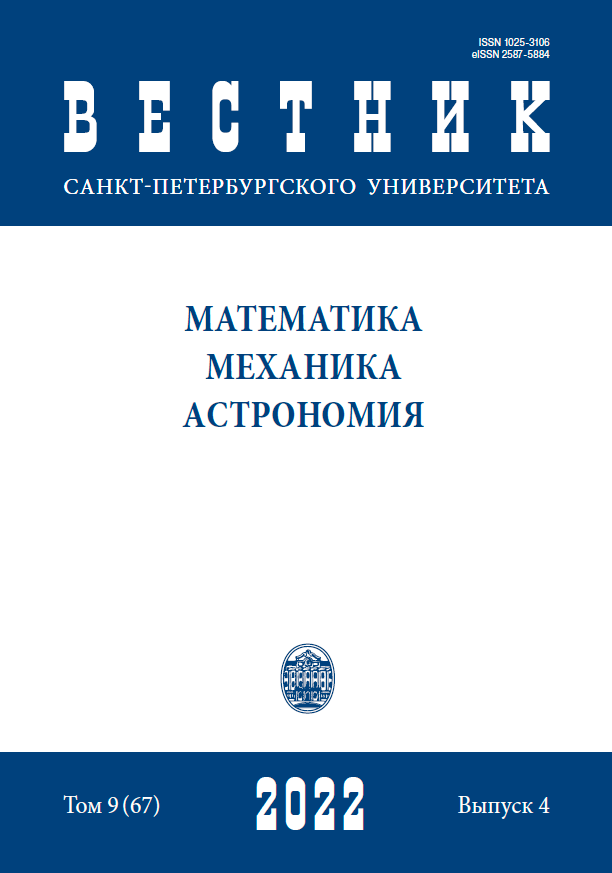Rotational and translational oscillations of cylinders of small aspect ratio in the air flow
DOI:
https://doi.org/10.21638/spbu01.2022.414Abstract
Rotational and translational oscillations of three cylinders differing in the ratio of length to cylinder diameter (elongation) are considered. The cylinders were suspended in the test section of the low velocity wind tunnel on a wire suspension containing steel springs. In the equilibrium position, the axis of the cylinders is directed horizontally and parallel to the velocity vector of the incoming flow. Under the influence of the air flow, the cylinders could make rotational or translational oscillations. Semiconductor strain gauges are attached to the two suspension springs, measuring the periodically changing tension of the springs during oscillations. The analog signal from the strain gauges was transmitted to a PC oscilloscope, which transmitted it in digital form to a computer. After calibration of the device and decoding of the signal, the frequencies and amplitudes of translational oscillations in the vertical direction and rotational oscillations around the horizontal axis passing through the center of the cylinder and perpendicular to the velocity vector of the incoming flow were determined. It turned out that in the studied range of cylinder elongations there is a transition from rotational to translational oscillations. A cylinder with elongation 1.9 performs steady rotational oscillations under the influence of wind, the amplitude of which increases with increasing air flow velocity. The previously proposed mathematical model correctly predicts rotational oscillations. The square of the amplitude of rotational oscillations is a linear function of the Strouhal number if the velocity of the air flow is sufficiently large. Translational oscillations of the cylinder with elongation 1.9 are damped. A decrease in the elongation of the cylinder to 1.5 is accompanied by a decrease in the amplitudes of rotational vibrations. At low air flow velocities, translational oscillations with a small amplitude are registered. Further reduction of the elongation to 1.0 leads to the complete absence of rotational oscillations. The amplitude of translational oscillations is growing. Translational oscillations are realized in a limited range of air flow velocities.Keywords:
wind tunnel, rotational oscillations, translational oscillations, strain gauge, cylinder
Downloads
References
Литература
References
Downloads
Published
How to Cite
Issue
Section
License
Articles of "Vestnik of Saint Petersburg University. Mathematics. Mechanics. Astronomy" are open access distributed under the terms of the License Agreement with Saint Petersburg State University, which permits to the authors unrestricted distribution and self-archiving free of charge.




